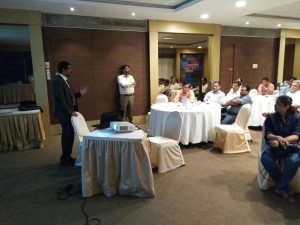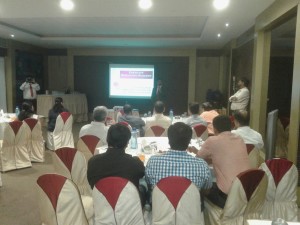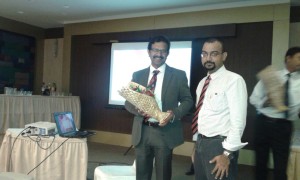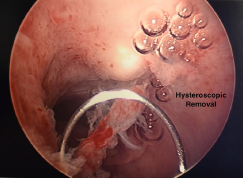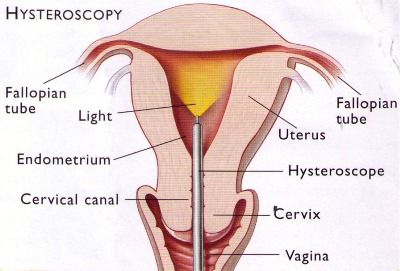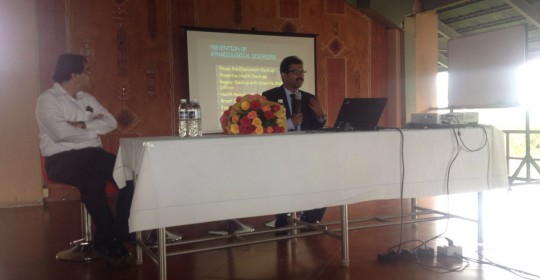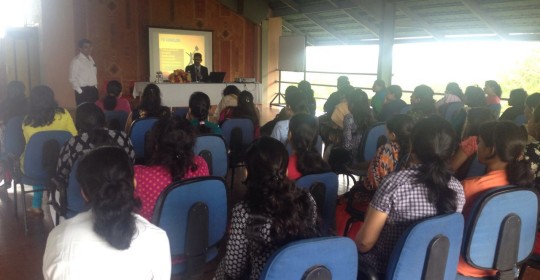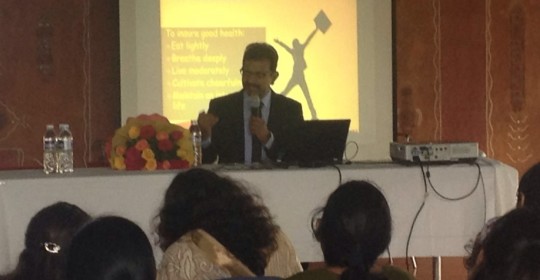-
Dr.Kishore Pandit
Dr. Kishore Pandit is an internationally reputed Gynaec Laparoscopic Surgeon & IVF Specialist.Read more -
Doctors Timetable
Click read more below to see services and current timetable for Dr.Kishore Pandit.Read more -
Quick Contact
-
Phone - AiMS Hospital020 2580 1000
-
Phone - Lifeline Hospital020 2588 2053
-
E-mailinfo@drkishorepandit.com
-
Phone - AiMS Hospital
Dr. Kishore Pandit
Gynaec Laparoscopic Surgeon & IVF Specialist
Dr. Kishore Pandit is an internationally reputed Gynaec, Laparoscopic Surgeon & IVF Specialist. He has received the coveted TOP GUN AWARD for fastest Laparoscopic Endo – suturing at San Diego, California, USA. He holds an experience of successful medical practice in Pune for more than 15 years. He aims to spread his medical practice in the remote areas and help the patients by providing treatment at subsidized rates. His years of experience, highest level of skills and his innovative approaches make Dr. Kishore Pandit the preferred surgeon to countless patients from the world. Dr. Kishore Pandit and his staff pride themselves on providing a rapid recovery time following surgery. Dr. Kishore Pandit is the only Indian Doctor Associated with Adhesion Related Disorder (ARD) Worldwide community for Endometriosis.
http://www.adhesionrelateddisorder.com/doctors.html

Role of Laparoscopic Surgery in Infertility
Latest Blogs
-
Office Hysteroscopy By Dr Kishore Pandit
Hysteroscopy is a procedure that allows your doctor to look inside your uterus in order to diagnose and treat causes of abnormal bleeding. Hysteroscopy is done using a hysteroscope, a thin, lighted tube that is inserted into the vagina to examine the cervix and inside of the uterus.
-
Urogynecology Treatment by Dr Kishore Pandit
Urogynecology Treatment by Dr Kishore Pandit
Urogynecology is a fairly new subspecialty and a fast-growing one, with increasing rates of pelvic floor disorders fueling a high demand for its services. A urogynecologist is an OB-GYN with advanced training and expertise in the treatment of pelvic floor dysfunction in women. These doctors are specially trained to remove faulty transvaginal mesh implants.
-
IVF, IUI Treatment By Dr Kishore Pandit
IVF, IUI Treatment By Dr Kishore Pandit
Treatment of infertility depends on the cause, how long you’ve been infertile, your age and your partner’s age, and many personal preferences. Some causes of infertility can’t be corrected. However, a woman may still become pregnant with assisted reproductive technology. Infertility treatment involves significant financial, physical, psychological and time commitment.
-
Pelvic Pain Treatment By Dr.Kishore Pandit
Pelvic Pain Treatment By Dr.Kishore Pandit
Pelvic pain is pain in the lowest part of your abdomen and pelvis. In women, pelvic pain may refer to symptoms arising from the reproductive or urinary systems or from musculoskeletal sources. Pelvic pain can sometimes radiate to your lower back, buttocks or thighs. Sometimes, you may notice pelvic pain only at certain times, such as when you urinate or during sexual activity.
Pelvic pain may arise from your digestive, reproductive or urinary system. Recently, doctors have recognized that some pelvic pain, particularly chronic pelvic pain, may also arise from muscles and connective tissue (ligaments) in the structures of the pelvic floor. Occasionally, pelvic pain may be caused by irritation of nerves in the pelvis.
-
Myomectomy Treatment By Dr.Kishore Pandit
Myomectomy Treatment By Dr.Kishore Pandit
It is a surgical procedure to remove uterine fibroids — also called leiomyomas. These are common noncancerous growths that appear in the uterus, usually during childbearing years, but they can occur at any age.
The surgeon’s goal during myomectomy is to take out symptom-causing fibroids and reconstruct the uterus. Unlike hysterectomy, which removes your entire uterus, myomectomy removes only the fibroids and leaves your uterus intact.
Women who undergo myomectomy report improvement in fibroid symptoms, including heavy menstrual bleeding and pelvic pressure.
-
Adnexal Tumor Treatment By Dr. Kishore Pandit
Adnexal Tumor Treatment By Dr. Kishore Pandit
The normal functioning ovary produces a follicular cyst 6-7 times each year. In most cases, these functional cysts are self-limiting and resolve within the duration of a normal menstrual cycle. In rare situations, a cyst persists longer or becomes enlarged. At this point, it represents a pathological adnexal mass. An adnexal mass is a lump in tissue of the adnexal of uterus, usually in the ovary or fallopian tube. Adnexal masses can be benign or cancerous.
Adnexal tumors occur in the:
- Ovaries
- Fallopian tubes
- Connective tissue around the ovaries or fallopian tubes
-
Endometriosis Treatment By Dr Kishore Pandit
Endometriosis Treatment By Dr Kishore Pandit
Endometriosis, is a common health problem in women. It gets its name from the word endometrium, the tissue that normally lines the uterus or womb. Endometriosis happens when this tissue grows outside of your uterus and on other areas in your body where it doesn’t belong. Most often, endometriosis is found on the:
- Ovaries
- Fallopian tubes
- Tissues that hold the uterus in place
- Outer surface of the uterus
-
Fibroid Treatment By Dr Kishore Pandit
Fibroid Treatment By Dr Kishore Pandit
Fibroids are non-cancerous (benign) tumors that grow from the muscle layers of the uterus (womb). They are also known as uterine fibroids, myomas, or fibromyomas. Fibroids can vary in size, from that of a bean to as large as a melon. Overweight and obese women are at significantly higher risk of developing fibroids, compared to women of normal weight.
-
Office Hysteroscopy By Dr Kishore Pandit
-
Urogynecology Treatment by Dr Kishore Pandit
-
IVF, IUI Treatment By Dr Kishore Pandit
-
Pelvic Pain Treatment By Dr.Kishore Pandit
-
Myomectomy Treatment By Dr.Kishore Pandit
-
Adnexal Tumor Treatment By Dr. Kishore Pandit
-
Endometriosis Treatment By Dr Kishore Pandit
-
Fibroid Treatment By Dr Kishore Pandit
-
Common Gynaecological Disorders (Lecture in a company)

